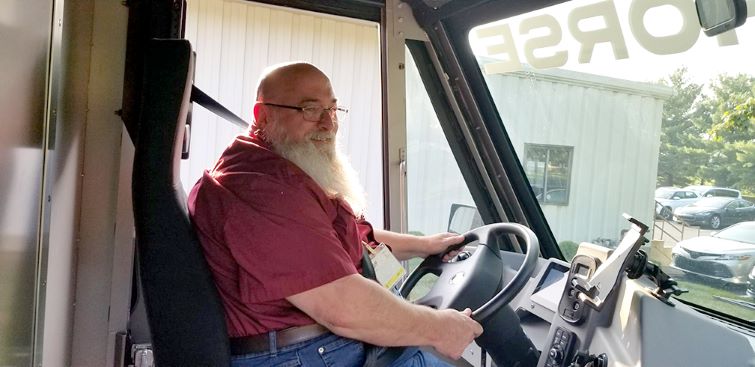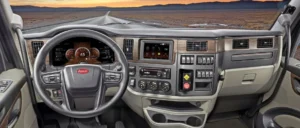COLUMBUS, Ind. — Electric vehicles (EVs) — trucks in particular — were on the minds of attendees at ACT Research’s 2023 Market Vitals conference, held Aug. 22-24.
On Wednesday, Aug. 23, Workhorse President Rick Dauch shared details about the status of the industry, including when and where we are most likely to see commercial EVs deployed. Dauch says Workhorse has focused on Classes 4-6 vehicles.
“That’s the area where the trucking industry will see initial success,” he said.
According to Dauch, routes served by Class 4-6 trucks form the niche of trucking that is closest to being met with current technology.
According to data presented by ACT, smaller trucks used on local routes will provide the fastest return on investment; the higher cost of purchase is eventually recovered in reduced fuel cost. It would seem the Class 4-6 market is easiest to fill because 71% of the routes serviced by these trucks are 100 miles or less.
Increase those routes to 150 miles, and the percentage becomes 97%. Most of the current models of Class 4-6 EVs can meet that range.
Dauch noted that there are numerous startup companies vying to sell electric trucks.
He says not all of them will make it because supply and demand for electric trucks is not yet established yet. In other words, no one knows for certain how well electric trucks will work in their operations; because of this, they will be buying cautiously, if at all, until the technology has been proven in their fleets.
Startup companies usually obtain seed money from investors, stock sales or other means, but can only operate so long without turning a profit — and no one is yet selling enough EV trucks to turn a profit.

So, what about those electric Class 8 tractors on long-haul runs with 53-foot trailers?
“Not gonna happen,” Dauch stated, going on to explain that long-haul carriers can’t invest in electric Class 8 tractors until an infrastructure exists for charging them — and that’s years away.
Carriers that use Class 8 equipment on local runs may find a use for electric rigs, but some locations are reporting wait times of up to two years for installation of transformers and other equipment to power chargers from the grid.
Dauch also pointed out that the U.S. lags behind both Europe and China in implementation of EVs, primarily due to government mandates.
In the U.S., all eyes are on California and CARB requirements. Beginning next year, 9% of all Class 4-6 vehicles purchased in California must be zero-emissions vehicles (ZEVs). That number grows to 20% by 2027, and to 50% by 2030.
The same rules stipulate that 5% of the Class 8 vehicles sold in California next year must be ZEVs. That goal may be a little harder to reach, but developments in technology could ease the transition. By 2036, all vehicles sold in the state must be ZEVs.
Those that live outside of California shouldn’t rest easy.
Currently, 16 states have either adopted or are considering adopting the same standards, Even the Environmental Protection Agency is considering making the standards national. President Joe Biden has indicated his support for implementing the CARB standards nationwide.
In the meantime, Workhorse and other manufacturers are pressing forward with development of their models. Workhorse products include the W4 CC cab and chassis with a payload of 5,000 pounds; the W750 Step Van, also 5,000 pounds; and the W56, which boasts a 10,000-pound payload.
I had a chance to test drive the W56 this week, and found it to be an enjoyable drive.
The dash controls are sparse compared to a typical Class 8 tractor, but there are fewer systems to monitor. The push-button transmission offers only drive, reverse, neutral and park.
Since the van is enclosed, the rear-view mirror mounted on the windshield seemed superfluous … until I threw the transmission into reverse. While backing, a view of the area behind the vehicle appeared in the mirror. When placed in Drive, a split view showing the area to the rear is displayed, along with views of blind spot areas on either side.
The truck was very quiet, with the loudest noise coming from the electric power-steering pump. Acceleration was smooth and quick. The biggest difference in performance came from the W56’s regenerative braking feature. When the throttle pedal was released, the vehicle slowed as if the brakes had been applied. The brake pedal was not used at all to slow the truck (which was empty).
It takes a little getting used to, but as the vehicle slows electricity is routed back into the battery to lengthen the truck’s range.
Questions about the power grid and charging infrastructure remain, of course, but if the Workhorse W56 truck is any indication of what’s to come, the future is looking good for electric vehicles in trucking.
Cliff Abbott is an experienced commercial vehicle driver and owner-operator who still holds a CDL in his home state of Alabama. In nearly 40 years in trucking, he’s been an instructor and trainer and has managed safety and recruiting operations for several carriers. Having never lost his love of the road, Cliff has written a book and hundreds of songs and has been writing for The Trucker for more than a decade.














